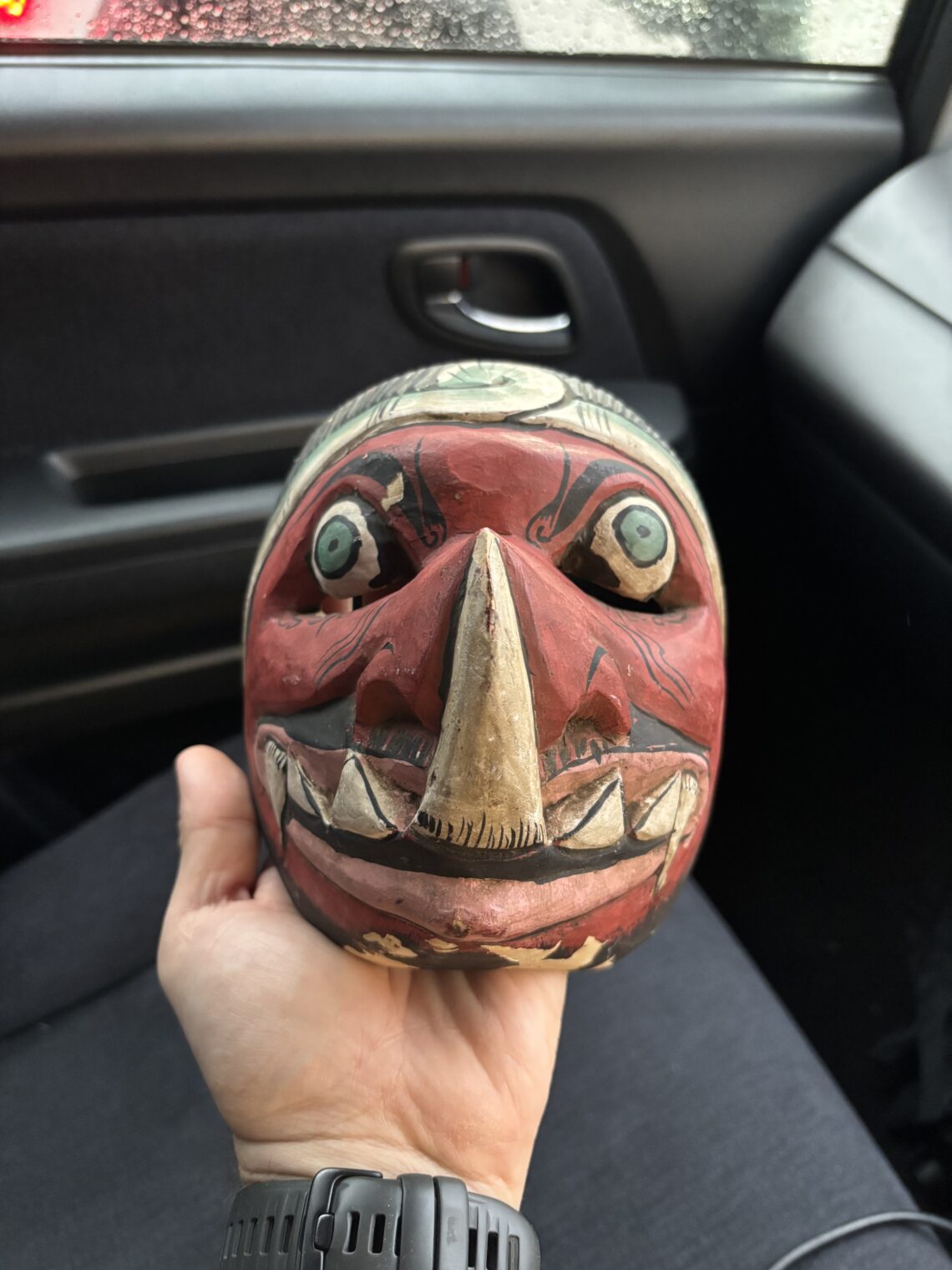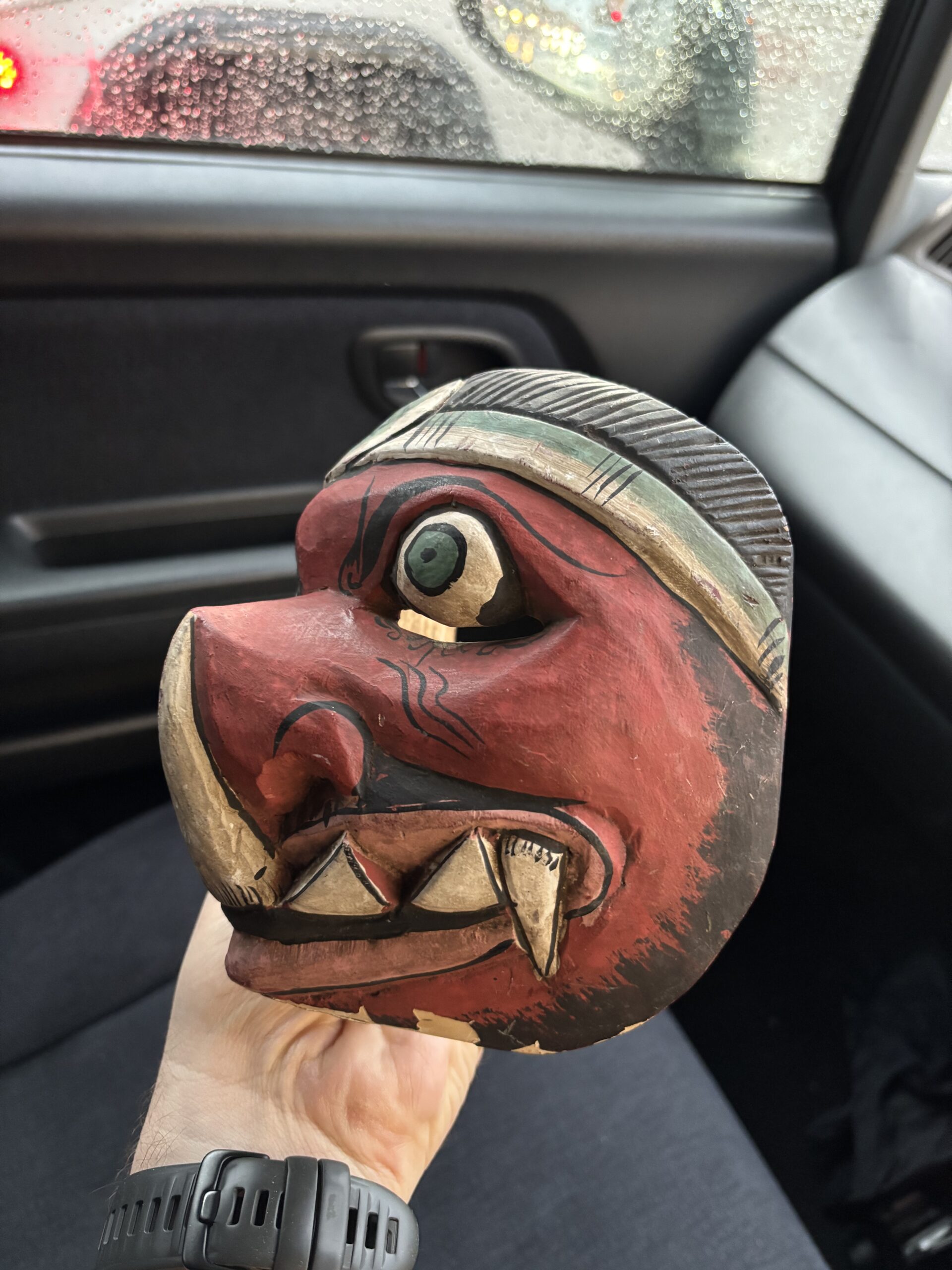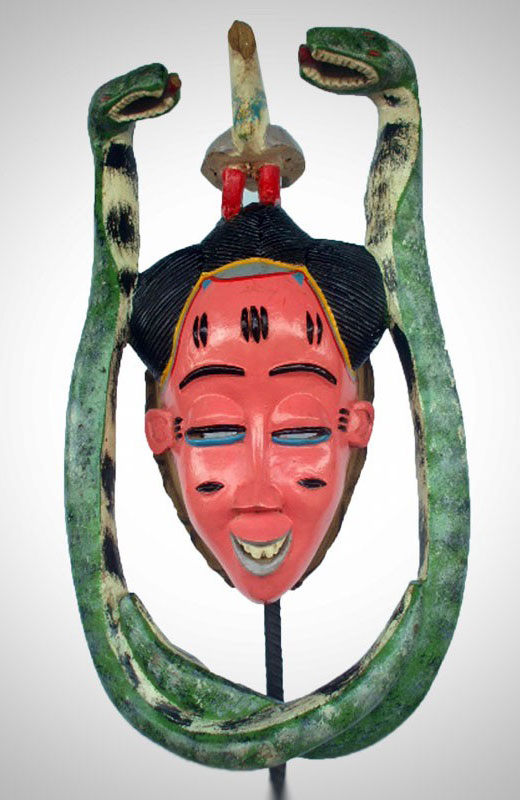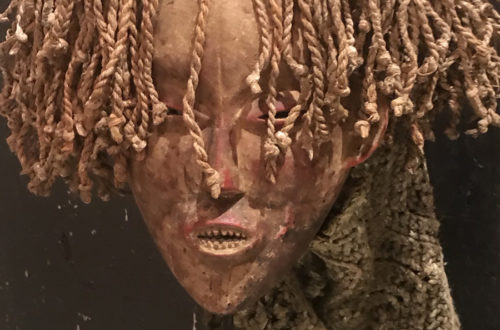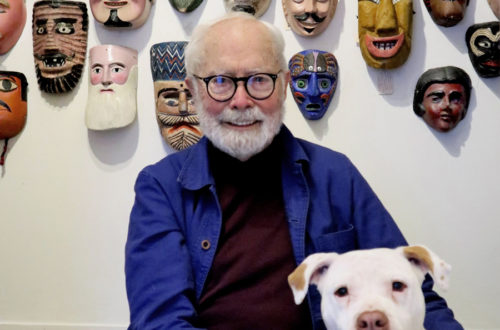At first glance, this red-faced figure feels almost mischievous its bulging eyes, carved fangs, and exaggerated snout give it a sense of feral humor. But beneath that grin lies a fascinating glimpse into the living mask traditions of Java, Indonesia, where animal spirits and ancestral stories intertwine.
Carved from lightweight wood and painted in bold red, black, and cream tones, this mask shows the familiar energy of the Topeng tradition Javanese masked dance-dramas that date back hundreds of years.
What immediately stands out, however, is the single elongated fang at the center of the mouth a stylistic choice rarely seen in classical Javanese forms. In standard Topeng Monyet (Monkey Mask) designs, the teeth are typically symmetrical and less pronounced. Here, the artist takes creative license, transforming the monkey into something almost mythic: part beast, part demon, part trickster.
Regional Variation and Local Identity
Java’s villages each maintain their own carving styles and symbolic language. Masks used in wayang topeng or local festivals often reflect the character of the community itself some elegant and refined, others raw and expressive.
This particular example, with its exaggerated tusk and intense gaze, likely comes from a smaller regional workshop where artisans freely blended influences from neighboring Bali or Lombok, or even from local folk deities outside the main theatrical canon.
Such freedom is characteristic of village-level production, where art, ritual, and play coexist. A mask like this may have been worn in local performance, or it may have been produced for collectors who admired the dramatic flair of Indonesian design.
Symbolism of the Monkey
In Javanese mythology, the monkey is both protector and provocateur. The heroic figure Hanuman the white monkey general from the Ramayana embodies loyalty, strength, and cunning.
But in folk theatre, monkey masks also appear as clowns, messengers, or chaotic spirits, reflecting the human struggle between impulse and wisdom. This mask’s fierce grin captures that duality perfectly protective yet mischievous, playful yet slightly menacing.
A Collector’s Reflection
While it may not belong to a codified court style, it offers something arguably more important: character. It reminds us that Indonesian mask carving remains a living art one that continues to evolve through the imagination of local artisans.
This Javanese monkey mask may never have graced a royal stage, but it has its own stage presence a grinning guardian that seems ready to leap into dance at any moment.
